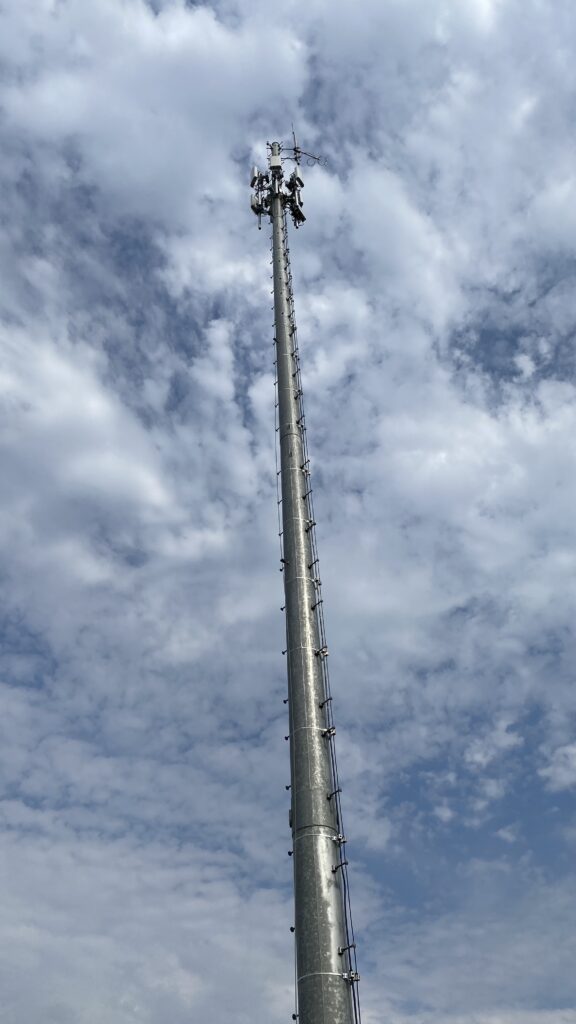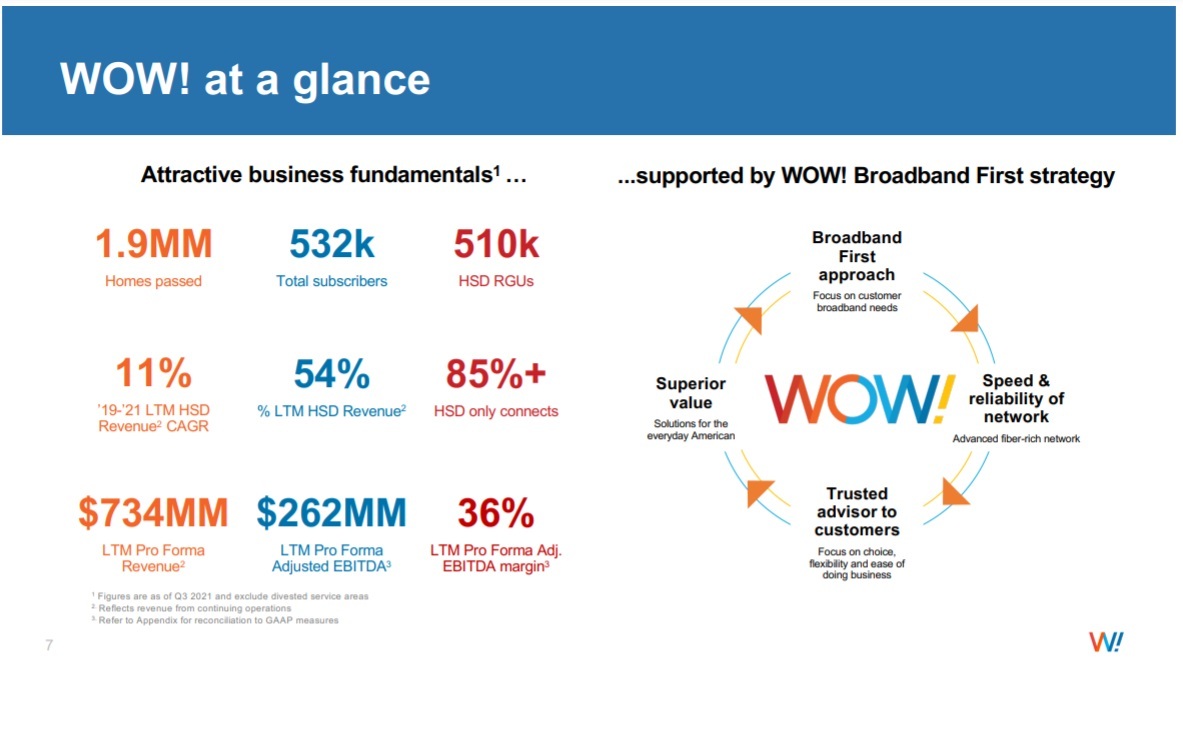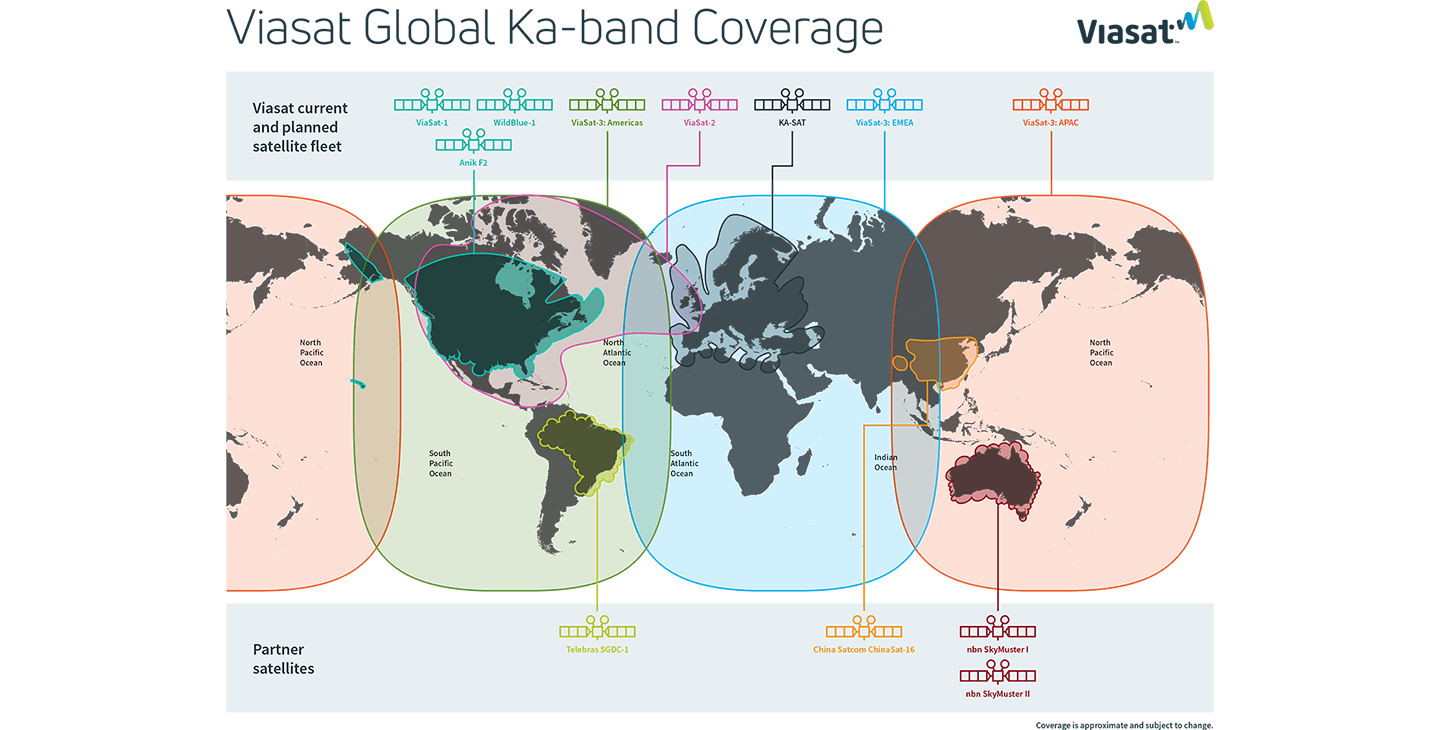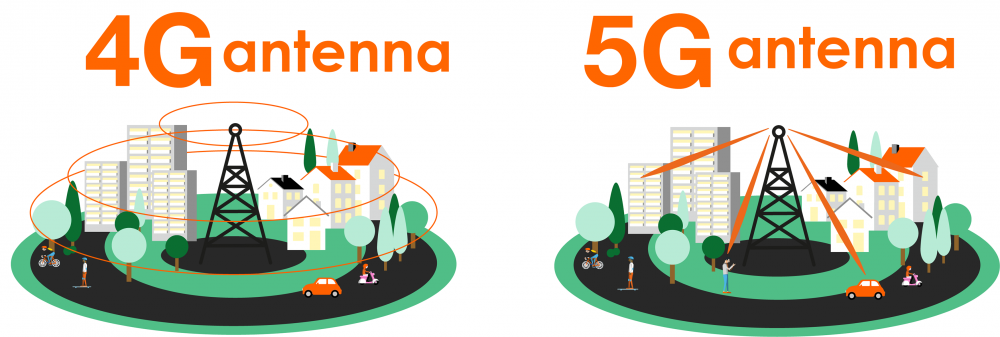Author: Alan Weissberger
The Amorphous “Edge” as in Edge Computing or Edge Networking?
There are many definitions for where the “edge” is actually located. To datacenter experts, the edge is a small datacenter closer to users. For telecom people, the edge is regional data center or carrier owned point of presence that is not in the cloud. To enterprise users, the edge can be on premises. What does the “edge” mean to you?
Extreme Networks suggests the edge is “any form of application delivery that is not in the cloud. To illustrate the concept, and the multiplicity of edges, the company created an infographic that highlights some of the most common meanings of “edge.”
Image Courtesy of Extreme Networks
References:
Multi-access Edge Computing (MEC) Market, Applications and ETSI MEC Standard-Part I
Nokia delivers private 4G fixed-wireless access (FWA) network for underserved students living in rural California
Nokia completed the first of a two-phase deployment of 4G fixed-wireless access (FWA) network with partner AggreGateway, to provide broadband internet connectivity to underserved students in the Dos Palos Oro Lomo (DPOL) school district of California.
The district comprises five campuses and serves a population of 5,000 residents. The Nokia platform will provide internet access to the homes of 2,400 students using Nokia Private 4.9G/LTE Digital Automation Cloud (NDAC) operating in the CBRS/On-Go GAA spectrum, and customer premises equipment including Nokia FastMile 4G Gateways and WiFi Beacons.
The DPOL technology team will operate its new LTE network through the centrally secure Nokia DAC Cloud monitoring application. DPOL will also provision LTE / Wi-Fi hotspots to students to be used with any standard laptop or tablet to access broadband internet.
The project’s first phase was completed in November 2021. Nokia and AggreGateway will complete the second phase in 2022.
The Federal Communications Commission (FCC) has reported nearly 17 million school children in the USA lack internet access at home, creating a nationwide ‘homework gap’ (Federal Communications Commission). This became even more pronounced during the pandemic as schools closed and distance learning became the new normal.

Image Credit: Nokia
Paoze Lee, Technology Systems Director of the Dos Palos-Oro Loma school district, said: “As we put a plan in place for distance learning during the pandemic we found we could only provide coverage for approximately 50% of DPOL students via commercial wireless network providers. Working with Nokia and AggreGateway, we are taking the next steps to level the field and ensure every student has the same access to our learning facilities.”
Octavio Navarro, President of AggreGateway, said: “Growing up in a rural small town like Dos Palos-Oro Loma, I experienced the digital divide firsthand. Being able to implement a Nokia private wireless solution for the students has been beyond rewarding. The IT staff from DPOL, AggreGateway, and Nokia worked seamlessly together to achieve this goal. We are excited, proud, and look forward to the continued success.”
Matt Young, Head of Enterprise for North America at Nokia, said: “We are pleased to help close the digital divide in the Dos Palos-Oro Loma school district. For many rural areas of the US it’s not commercially viable to build out networks, and often families on the lowest income suffer. Leveraging our DAC and FastMile FWA technologies we can enable the delivery of much needed internet connectivity to students in the area.”
The project’s first phase was completed in November 2021. Nokia and AggreGateway will complete the second phase in 2022.
About Nokia:
As a trusted partner for critical networks, we are committed to innovation and technology leadership across mobile, fixed and cloud networks. We create value with intellectual property and long-term research, led by the award-winning Nokia Bell Labs.
Adhering to the highest standards of integrity and security, we help build the capabilities needed for a more productive, sustainable and inclusive world.
About AggreGateway:
Based in San Diego, California, AggreGateway is a unique group of network and wireless engineers that are experienced in designing networks within the private, public safety, transportation, utilities, government, and educational verticals. AggreGateway provides network consulting services, wireless solutions, LAN/WAN design and implementation, network security, systems integration, and managed services. Our goal is to provide a range of robust and flexible network solutions that are customized to each individual network.
References:
E-Space announces $50M in seed funding to put 100K sustainable satellites in orbit and clean up space debris
Greg Wyler, the space entrepreneur who founded founded both O3b Networks and OneWeb [1.], plans to put up to 100,000 satellites in orbit this decade with his latest satellite business venture named E-Space. The company on Monday said it had raised $50 million in seed funding (largest space seed round ever) from Prime Movers Lab, a fund that invests in breakthrough scientific start-ups.
E-Space says it will enable a new generation of space-based communications capabilities. The start-up plans to create a vast “mesh” network of small satellites that can deliver bespoke and commercial services to business and government, from secure communications to remote infrastructure management.
In a world where satellites are becoming space polluters, the new E-Space systems have the double bottom line of sustainability as they will eventually actively and sacrificially capture and deorbit small debris in space while performing their function as communications satellites.
“One of the best ways to understand and manage Earth is from space,” said Wyler, founder and chairman of E-Space. “We designed E-Space to democratize space, to enable the collection of continuous data about our planet with real-time information of sensors and devices across the world to combat climate change, and to upgrade our electric grids. Importantly, we’ve built sustainability into everything we do. We are designing our systems to not only prevent space debris generation, but to eventually actively reduce space debris so generations to come will be able to access the power of space.”
Wyler’s plans come as the world becomes increasingly concerned about the risk of collisions in orbit and resulting space debris. Since 2019 the number of working satellites has risen 50 per cent to roughly 5,000, largely because new commercial groups are exploiting lower launch costs to build businesses in low-earth orbit, 150km-200km above the earth. Elon Musk aims to launch some 40,000 satellites for his Starlink internet service.
Wyler insisted E-Space will leave low-earth orbit cleaner than before its satellites are launched, with a network that will collect and deorbit debris even as it provides connectivity services. The satellites have a substantially smaller cross section than rivals, Wyler told the Financial Times, and will be designed to “crumple” rather than break apart when struck. They will also “entrain” any debris they encounter and automatically deorbit when a certain amount has been collected.
“Like oysters in the river that filter the river and clean it, our satellites are the first to be designed to clean space. The more satellites we have, the cleaner space will be,” Wyler added.

Greg Wyler while at OneWeb in 2019. IMAGE courtesy of Sarah L Voisin/The Washington Post/Getty
………………………………………………………………………………………………………………………………………………….
Anton Brevde, partner at Prime Movers Lab and on the board of E-Space, suggested Wyler’s innovative design would do for satellites what Apple’s iPhone did for mobile phones.
“Greg is an icon of space innovation with an unparalleled track record of pushing the industry forward by turning bold ideas into everyday reality. E-Space is uniquely built to bring the power of space to any business or government while actively reducing the existential threat of space debris. The company already has several advanced conversations with major customers and is poised to take satellite mesh networks mainstream.
”How do you minimize a 300kg satellite to something that is an order of magnitude smaller? How do you go from the personal computer to the iPhone, something that is smaller and thinner. It’s a whole bunch of innovation that came together. He has been brainstorming for years on how to make communications satellites as small and cheap as possible,” Brevde added.
E-Space “must be able to freely decide on its technology path, on its vendor selection and on its component path, where shareholders are purely financial as opposed to strategic,” he added. The start-up plans to launch its first test satellites next month and a second batch at the end of the year, after which it aims to start building its constellation. Wyler acknowledged that E-Space was likely to require another funding round but insisted his network would cost a fraction of existing LEO constellations. “The historical model of spending $5bn-$10bn is broken,” he said. “We are running at about 10 per cent of the cost of prior LEO constellations.”
E-Space has all the licenses needed to be able to deliver the service on multiple frequencies, Wyler said. The licenses had been acquired through Rwanda, which last year applied to the International Telecommunications Union (ITU) in Geneva to license more than 300,000 satellites. [The Rwandan government was an original investor in OneWeb.]
Note 1. Wyler founded OneWeb in 2012 under the name WorldVu and was the company’s first CEO. OneWeb went bankrupt when investors pulled out in 2020, and the company was brought back under an ownership consortium led by Bharti Global, including the United Kingdom government, Eutelsat, and Softbank. OneWeb was also formed with the mission of connecting the world. The company still promotes that mission, along with providing connectivity to enterprise verticals.
……………………………………………………………………………………………………………………………
E-Space will provide the world’s first federated systems that can dynamically extend satellite capacity for a multitude of applications, ranging from secure communications to managing remote infrastructure.
Core to this approach is E-Space’s new generation of satellites that make space affordable and accessible, enabling custom networks for companies and governments globally while providing unparalleled security and resiliency. E-Space’s novel peer-to-peer satellite communication model enables real-time command and control and global insights. Dedicated constellations ensure sovereignty and eliminate exposure to foreign entities, using a “Zero Trust” topology to protect data.
E-Space places sustainability at the heart of its architecture, building on five key design tenets to make space safe:
- Minimize satellite debris on collision: Satellites should minimize the number of new debris objects that are generated, with zero being the ideal goal.
- Capture and deorbit: Satellites should be designed to minimize the debris from objects they hit and capture debris they contact to prevent further collisions.
- Fail safe: Satellites should be designed to fail into a high-drag configuration where they passively, and quickly, deorbit.
- 100% demise: Satellites must fully demise upon re-entry into the Earth’s atmosphere.
- Small cross section: Large cross-section satellites crowd others from space and will cause collisional cascading and debris creation. Small cross-sections make satellites much less vulnerable to collision and LEO constellations should limit their individual and cumulative cross-sections. System-wide cross-sections should be tracked and considered relative to calculations on total orbital carrying capacity, for individual altitudes to enable appropriate sharing.
The investment fully funds E-Space’s “Beta 1” launch of its first test satellites in March 2022 as well as its second “Beta 2” launch later this year. Mass production is slated for 2023. The company is composed of two independent entities based in France (E-Space SAS) and the United States (E-Space, Inc.).
About E-Space:
E-Space is democratizing space with a mesh network of secure multi-application satellites that empowers businesses and governments to access the power of space to solve problems on Earth. Founded by industry pioneer Greg Wyler, E-Space provides satellite constellation deployments with higher capabilities and lower cost to enable a new generation of services and applications, from 5G communications to command and control systems. The company puts sustainability at the forefront, with a purposeful design that minimizes and reduces debris and destruction while preserving access to space for future generations. Learn more at e-space.com.
Addendum:
China is also in the smart satellite business. A Financial Times editorial on Monday by William Schneider stated:
“Both China and Russia have well developed advanced offensive capabilities in space. In late January, for example, China’s Shijian 21 (CJ-21) satellite disappeared from its regular position in geostationary orbit 22,000 miles above the earth. The CJ-21 maneuvered close to one of China’s malfunctioning satellites in its 35-satellite Beidou constellation. There it used a grappling arm to move the malfunctioning satellite to a “graveyard” orbit.”
…………………………………………………………………………………………………………………………………………..
References:
https://www.ft.com/content/0db57559-a8d0-4e9b-aeef-e3e7d796d635
https://www.ft.com/content/7d566088-7d25-4fde-9b02-311f86eb845e
China to complete Beidou satellite-based positioning system by June 2020- to be used with 5G
Deutsche Telekom expands its fiber optic network in 78 cities and communities
Deutsche Telekom said it has expanded its fiber optic network for almost 7,000 companies in 78 cities and communities. Telekom is providing the companies with up to 1 Gbps speeds. The German based telco has connected industrial parks in the municipalities of Ahrensburg, Deggendorf, Lastrup, Lauf, Mainz and Mannheim among others.
Telekom is laying 560 km of fiber-optic networks to carry out the project and to connect the companies. It is using a trenching process to expand its fiber network.

“Telekom is Germany’s digital engine. That is why we are building our network seven days a week, 24 hours a day. In the city as well as in the countryside. We are massively accelerating our roll-out. In the coming year, we will go one better and invest around six billion euros in Germany. By 2030, every household and every company in Germany should have a fiber-optic connection. We will build a large part of this. But our competitors are also in demand,” said Srini Gopalan, Member of the Board of Management of Telekom Deutschland.
He also commented on the new German government’s plans in terms of digitization: “The new coalition is focusing on FTTH as THE technology of digitization. We explicitly welcome this. Faster processes – including for applications and approvals – will also help us to speed up fiber roll-out. We support the digital set off in our country. Digital networks should bring people together. Their roll-out should no longer be stuck in paper files.”
References:
https://www.telecompaper.com/news/deutsche-telekom-expands-network-for-7000-companies–1413189
https://www.telekom.com/en/media/media-information/archive/turbo-for-fiber-and-5g-643014
WideOpenWest picks Seminole County, FL as its 1st greenfield area for FTTP deployments
Like so many legacy and regional telcos, cablecos, WideOpenWest (WOW) [1.] is pursuing aggressive fiber-to-the-premises (FTTP) deployments. The company is targeting a part of Seminole County, Florida located near Orlando, as the first area for its ambitious plan to deploy FTTP Internet access to greenfield areas. Cableco Charter Communications currently provides broadband internet service to Seminole County.
This new expansion is part of the company’s larger Greenfield initiative to build new markets non-adjacent to its existing network and bring its advanced fiber technology and award-winning customer service to customers across its growing footprint. WOW! already serves Pinellas County and Panama City in Florida and identified Seminole County as a new community ripe for innovation and growth. The company plans to reach more than 60,000 homes passed upon completion of the project.
Note 1. WideOpenWest is the sixth largest cable operator in the United States with their network passing 3,248,600 homes and businesses. The company offers landline telephone, and broadband Internet services, and IPTV. As of December 31, 2020, WOW! has about 850,600 subscribers. They offer up to 1 Gb/sec downstream fiber internet service in some areas.
………………………………………………………………………………………………………………
WOW estimates it will invest at least $60 million in the county for its FTTP deployment. The estimated cost of $1,000 per passing is consistent with prior expectations.
“We are excited to announce Seminole County as the first service area to kick off our Greenfield initiative,” said Teresa Elder, CEO of WOW!. “We are delighted to offer communities in Seminole County a better broadband choice so they can work, learn and be entertained using WOW!’s multi-Gig fiber-to-the-home network. Area residents and businesses will be pleasantly surprised by our reliable network, super-fast speeds and choice of exceptional products to meet their broadband usage needs.”
Work on the new all-fiber infrastructure in Seminole County has already begun. Once completed, customers will benefit from WOW!’s innovative technology and product suite that provides the best in choice, reliability, speed and value. Customers will have access to multi-Gig HSD service, WOW!’s fastest broadband speed available, home and business WiFi solutions to support streaming, remote work and small business needs as well as WOW! tv+, its premier IP-based video service.
“Investing in Seminole county is investing in its community, its people, and its growth,” said Kirk Zerkle, VP of Market Expansion at WOW!. “We are thrilled to give residents and businesses in Seminole County the service they deserve. We know how important it is to be connected in every aspect of our lives and look forward to WOW! becoming an integral part of this county.”
The selection of Seminole county comes almost two months after WOW announced that building FTTP networks to greenfield markets [2.] will play a big role in fueling growth over the next five years. WOW recently sold off a handful of systems for $1.8 billion to help fund this growth initiative. The company intends to build out fiber networks to greenfield areas passing at least 200,000 homes and businesses by 2027, with the potential to expand that to 400,000 locations.
Note 2. WOW has identified greenfield areas as those that are not-adjacent to its existing markets which have low density. The company expects to announce additional greenfield markets later this year.
WOW! continues to pursue expansion opportunities across the country and expects to announce additional markets later this year.
“We’ve reached an inflection point in the industry where fiber-to-the-home build costs have reached parity with HFC [hybrid fiber/coax],” Henry Hryckiewicz, WOW’s chief technology officer, explained at an investor day held in December 2021.
About WOW! Internet, Cable & Phone:
WOW! is one of the nation’s leading broadband providers, with an efficient, high-performing network that passes 1.9 million residential, business and wholesale consumers. WOW! provides services in 14 markets, primarily in the Midwest and Southeast, including Michigan, Alabama, Tennessee, South Carolina, Florida and Georgia.
With an expansive portfolio of advanced services, including high-speed Internet services, cable TV, phone, business data, voice, and cloud services, the company is dedicated to providing outstanding service at affordable prices. WOW! also serves as a leader in exceptional human resources practices, having been recognized eight times by the National Association for Business Resources as a Best & Brightest Company to Work For, winning the award for the last four consecutive years.

Source: WideOpenWest
………………………………………………………………………………………………………………….
Please visit wowway.com for more information.
………………………………………………………………………………………………………………….
WOW! Media Contact:
Jamie Mayer
[email protected]
References:
Dell’Oro: LTE still dominates private wireless market; will transition to 5G NR (with many new players)
Dell’Oro Group just published an updated Private Wireless market report with a 5-year forecast. According to the report, private wireless RAN revenues for the full-year of 2021 are slightly weaker than initially projected.
“The markdown is more driven by the challenges of converting these initial trials to commercial deployments than a sign that demand is subsiding,” said Stefan Pongratz, Vice President at Dell’Oro Group. “In fact, a string of indicators suggest private wireless activity is firming up not just in China but also in other regions,” continued Pongratz.
Additional highlights from the Private Wireless Advanced Research Report:
- Private wireless projections have been revised downward just slightly to factor in the reduced 2021 baseline.
- Total private wireless RAN revenues, including macro and small cells, are still projected to more than double between 2021 and 2026.
- The technology mix has not changed much with LTE dominating the private market in 2021 and 5G NR still on track to surpass LTE by the outer part of the forecast period, approaching 3 percent to 5 percent of the total 5G private plus public RAN market by 2026.
- Risks are broadly balanced. On the upside, the 5G enterprise puzzle has still not been solved. The successful launch of private 5G services by suppliers with strong enterprise channels could accelerate the private 5G market at a faster pace than expected. On the downside, 5G awareness is improving but it will take some time for enterprises to fully understand the value of private LTE/5G.
Comment & Analysis:
This author notes a bevy of new activity in the 5G private network space. It’s almost approaching a frenzy!
Yesterday, Cisco announced a “private 5G service that simplifies both 5G and IoT operations for enterprise digital transformation.” The company promised to show off the new product at the upcoming MWC trade show in Barcelona, Spain. Cisco to sell its 5G private network under an “as-a-service” model, such that enterprise customers who purchase it will only pay for what network resources they actually use. The company said that it would partner with unnamed vendors for all the necessary components, adding that it will run over midband spectrum. The company did not provide any further details. It should be noted that Cisco has never had ANY 2G/3G/4G/5G RAN products, as their wireless network portfolio has always been focused on WiFi (now for enterprise customers).
In late November 2021, Amazon unveiled its new AWS Private 5G service that will allow users to launch and manage their own private mobile network in days with automatic configuration, no per-device charges, and shared spectrum operation. AWS provides all the hardware, software, and SIMs needed for Private 5G, making it a one-stop solution that is the first of its kind. Dell’Oro Group’s VP Dave Bolan wrote in an email, “What is new about this (AWS Private 5G) announcement, is that we have a new Private Wireless Network vendor (AWS) with very deep pockets that could become a major force in this market segment.”
In addition, Mobile network operators like Deutsche Telekom, AT&T and Verizon offer private 5G networks, as do other cloud computing companies, mobile network equipment vendors like Ericsson and Nokia, system integrators like Deloitte, as well as startups like Betacom and Celona. So it’s a crowded market with suppliers each expecting a chunk of a very big pie.
I posed the seemingly contradictory finding of a less than forecast 2021 private wireless market vs the new private 5G players to Dell’Oro’s Pomengratz. In his email reply, Stefan wrote:
“If I had to summarize all our various projections I will just say that the things we know (public 5G MBB/FWA) are generally accelerating at a faster pace than expected while the things that we don’t know (private 5G/critical IoT etc.) are developing at a slower pace than expected.
And for this particular update, slower-than-expected comment was more related to revenues than activity. I agree with you that activity both when it comes to private trials and entering this space remains high.
At the same time, we have talked about private cellular for a long time but the reality is that we have not yet crossed the enterprise chasm. Nevertheless, we have a very large market opportunity ($10B to $20B for just the private 4G/5G RAN) that is still up for grabs, hence the high level of interest.”
References:
Private Wireless Weaker Than Expected in 2021, According to Dell’Oro Group
https://www.cisco.com/c/en/us/products/wireless/private-5g/index.html
Deloitte to co-ordinate 5G private network field trial at the largest hospital in Latin America
Viasat reports record quarterly revenues; launch of ViaSat-3 satellites in late summer 2022
Viasat posted record fiscal third quarter revenues of $720 million, up 25% year-over-year, boosted by its recent acquisitions of RigNet and Euro Broadband Infrastructure (EBI), as well as growth in its in-flight connectivity (IFC) business. Nevertheless, the provider of satellite and wireless networking technology reported a loss of $6.6 million in its fiscal third quarter. Virgin Atlantic was an important new in-flight connectivity (IFC) customer while the company continued to expand their fixed broadband presence internationally.
Satellite services unit revenues increased 40% to a record $310 million, while government systems revenues rose 2% to $270 million. Commercial Networks revenues rose 55% to $140 million, driven by mobile IFC terminal deliveries and the performance of its ground antenna systems business.
However, Viasat’s plan to provide global coverage with a set of new, high-capacity ViaSat-3 satellites has fallen a little behind schedule. The launch of the first of three satellites, set to cover the Americas, is now expected to happen in the late summer rather than in the first half of 2022.
The delay was due to a “modest slippage in our supply chain” fueled in part by the pandemic, Rick Baldridge, Viasat’s president and CEO, said on the company’s earnings call. “We’ve been working through limited availability of specific, critical skill workers.”
If the current plan holds, Viasat hopes to have the first ViaSat-3 satellite in service before the end of 2022. Future ViaSat-3 satellites are poised to cover the European, Middle East and Africa (EMEA) and Asia-Pacific regions.

Viasat executives said the company is making good progress with alpha testing of a space-ground integration system for ViaSat-3, and they don’t expect the scheduling delay on the first ViaSat-3 satellite to materially impact Viasat’s financial guidance.
The payload module for the second ViaSat-3 satellite (for the EMEA region) is at Viasat’s facilities, with about 95% of the payload units now installed, the company said.
Jeff Baumgartner of Light Reading wrote about ViaSat-3 competition:
How much of a competitive impact Viasat’s residential satellite broadband service is seeing from FWA (Fixed Wireless Access) or even Starlink is difficult to pinpoint. Viasat no longer reports U.S. subscriber numbers as it expands that piece of the business globally. However, the company did note there was a “slight decrease” in its U.S. subscriber base in its fiscal third quarter as Viasat reallocates satellite bandwidth for mobile services.
Viasat execs aren’t overly concerned about a new, faster and pricier “Premium” tier from Starlink [1.] that will start to reach business customers and other high-capacity users in the second quarter of 2022.
Note 1. Starlink Premium promises to deliver up to 500Mb/sec, but is very expensive. It sells for $500 per month and requires customers to also pay $2,500 for the satellite router and a new antenna outfitted with double the capacity of its predecessor. Starlink Premium, a service targeted to businesses and other users that require more speed and capacity, also requires customers to put up a $500 fully refundable deposit.
……………………………………………………………………………………………………………………
Viasat expects its proposed deal for Inmarsat to close by the end of 2022. The company was named the 2021 Global Satellite Business of the Year, by Euroconsult at the World Satellite Business Week Summit.
References:
https://investors.viasat.com/static-files/05cbc97c-8c9b-4a5f-a59c-762b4afaade9
https://www.viasat.com/space-innovation/satellite-fleet/global-satellite-internet/
India’s Production Linked Incentive (PLI) scheme for 5G equipment attracts Nokia & Ericsson
Nokia and Ericsson said India’s production-linked incentive (PLI) scheme [1.] for design-led 5G manufacturing will position India as a global manufacturing hub and allow them to deepen their manufacturing capabilities in the country.
Note 1. PLI is the sum of India government incentives that are directly linked to manufacturing performance. The more goods companies manufacture in India the better incentives they will get. The incentives are of diverse types: subsidies, monetary benefits, etc.
……………………………………………………………………………………………………………………
Nokia said it is exploring opportunities to manufacture more products in India in a cost-competitive manner to serve both the local and the global market. Nokia’s India spokesperson said the company was on track to fulfil its investment and production commitments under the existing PLI scheme for telecom equipment.
Swedish telecom equipment vendor Ericsson, in a separate statement, said 5G spectrum auction with 100% fiberization (backhaul) with public-private partnership (PPP) model by 2025 will help bridge the digital divide for an inclusive development of the nation in-line with the ‘Digital India’ vision.
“Design-led initiatives for 5G under the PLI scheme and 5% of USOF for R&D purposes will strengthen the ‘Make in India’ initiative, and contribute to making India a global manufacturing hub,” said Nitin Bansal, managing director for India at Ericsson.
Ericsson, along with Nokia, Akashastha Technologies, HFCL, Foxconn, Coral Telecom, VVDN Technologies, Dixon Technologies, Tejas Networks and GS India, were selected for the original PLI scheme. India’s Department of Telecommunications (DoT) approved 31 proposals in 2021 entailing investments of INR33.5 billion ($447.3 million) over the next four years.
“The scheme for design-led manufacturing to be launched for the 5G ecosystem as part of PLI will be a boost to the overall telecom and electronic sectors. It will also provide and promote research and development of technology and solutions and will enable affordable broadband and mobile communication,” says Sanjay Gupta, vice president and India managing director, NXP Semiconductors.
Some media reports suggest that it is possible that the funds for this scheme may come from the ongoing PLI scheme for the telecom sector.
The scheme is in keeping with the government’s keenness to position India as a telecom manufacturing destination with a growing emphasis on self-reliance and the domestic manufacturing ecosystem.
Chinese gear makers Huawei and ZTE are yet to receive trusted source approval from the National Cyber Security Coordinator (NCSC), which means the space is open to Indian manufacturers.
It’s possible that the government may mandate the Indian service providers to procure a certain percentage of their requirement from the Indian vendors only. The PLI scheme is timely, with the announcement that the 5G spectrum auction will be held in 2022.
Service providers are in the midst of conducting 5G trials, and will be investing heavily in 2022 to build networks. 5G capex is likely to increase significantly over the next few years – hopefully helping Indian manufacturers grab some share of the pie.

Orange Espana reveals 700MHz 5G rollout plans
Orange Espana has announced its plans for activation of 5G services on the 700 MHz band, describing the network as the largest 5G-700MHz network in Spain.
The 700 MHz band, already used by some operators for 4G, has the benefit of enabling good penetration inside buildings and good coverage with speeds comparable to those of mono-band 4G.
A few weeks after Vodafone said it would reach 109 localities by the end of the year, Orange responded that it will cover 1,100 towns and cities with the technology by December, including around 140 digital divide localities with less than 1,000 inhabitants.
The rollout will also include 140 towns and cities with more than 50,000 inhabitants and 820 localities with between 1,000 and 50,000 inhabitants across 30 provinces. Benefits of the 700 MHz band frequencies include lower latencies plus significantly better coverage in indoor and larger outdoor areas, said the operator.
Orange activated its first 5G antenna for the 700 MHz band at Valencia’s Polytechnic University last September, having switched on its Non-Standalone (NSA) 5G network in Madrid, Barcelona, Valencia, Seville and Malaga the previous year.

The launch comes after Orange paid EUR 350 million for a 2×10 MHz block in the government’s July 2021 auction of frequencies in the 700 MHz band. Orange has the largest amount of 5G-compatible spectrum in Spain thanks to its existing 110 MHz concession in the 3.5 GHz band, for which it paid EUR 173 million.
As of 30 September 2021, Orange Espana offered 5G coverage to over 50% of the population and had 620,000 5G subscriptions.
MetroNet’s FTTP buildout in Florida; Merger with Vexus Fiber
Continuing with the massive U.S. fiber to the premises (FTTP) movement, regional fiber carrier MetroNet (headquartered in Evansville, Indiana) said it will bring fiber-optic internet access directly to homes and businesses throughout the Deltona, FL and neighboring communities, including DeBary and Orange City.
Deltona marks the third community in Florida that will have access to MetroNet services through a fully funded $35 million investment in the community. The three-year construction project is set to begin in the summer of 2022, with the first customers able to receive service as early as the fall of 2022.
Once completed, Deltona will join the country’s internet elite as a Gigabit City. Only about 40 percent of households in the U.S. have access to symmetrical upload and download gigabit (1,000 mbps) speeds that only fiber optic networks can provide.
“MetroNet is thrilled for Deltona residents and businesses to have access to our future-proof services that will allow sparkling 4k video streaming, glitch-free gaming, crystal-clear virtual meetings, and internet experiences of the future that we can only begin to imagine,” said John Cinelli, MetroNet’s CEO. “MetroNet is proud to soon be able to add Deltona to our growing list of Gigabit Cities.”
MetroNet plans to hire local market management positions, sales and customer service professionals, and service technicians to support the Deltona area. Those interested in joining the MetroNet team can visit MetroNetInc.com/careers to search available positions and to submit applications.
………………………………………………………………………………………………………………………
Last week, Metronet announced it has merged with fellow independent fiber based network provider Vexus Fiber. The combined companies will continue to operate under their existing brands and with their existing executive roster. Financial terms of the deal were not disclosed.
Vexus, based in Lubbock, TX, deploys and operates FTTP networks in Texas and Louisiana, with plans for expansion in New Mexico. Markets currently serving those states include Lubbock, Amarillo, Wichita Falls, Abilene and surrounding areas of Texas, as well as Hammond, Covington and Mandeville in Louisiana. New FTTP networks in the Rio Grande Valley are in various stages of deployment (see “Vexus Fiber to Build FTTH Network in Rio Grande Valley Region of Texas”), Tyler, Nacogdoches, and San Angelo, TX; Lake Charles, LA; and Albuquerque and Santa Fe, NM. Investors in the company included Pamlico Capital and Oak Hill Capital.
Metronet is operating or building FTTP networks in more than 120 communities in Indiana, Illinois, Iowa, Kentucky, Michigan, Minnesota, Ohio, Florida, North Carolina, Virginia, Texas, Wisconsin, and Missouri. It had received cash from KKR last April (see.) “KKR will take stake in Metronet as part of new funding round”) Oak Hill Capital is also an investor. Both companies provide gigabit or faster broadband services to their residential and business customers.
“We are very excited to welcome Vexus Fiber and their partners to Metronet,” said Metronet CEO John Cinelli. “Vexus has rapid growth and a high-customer-service mindset, similar to Metronet, and joining them allows us to expand our service area to even more Americans.”
“At Wexus, our mission is to bring our high-quality service to as many homes and businesses as possible in the Southwest,” said Jim Gleeson, president and CEO of Wexus. “With this merger, we can reach even more people faster.”
About MetroNet:
MetroNet is the nation’s largest independently owned, 100 percent fiber optic company headquartered in Evansville, Indiana. The customer-focused company provides cutting-edge fiber optic communication services, including high-speed Fiber Internet and full-featured Fiber Phone with a wide variety of programming.
MetroNet started in 2005 with one fiber optic network in Greencastle, Indiana, and has since grown to serving and constructing networks in more than 150 communities across Indiana, Illinois, Iowa, Kentucky, Louisiana, Michigan, Minnesota, Ohio, Florida, North Carolina, Virginia, Texas, Wisconsin, Missouri, and New Mexico. MetroNet is committed to bringing state-of-the-art telecommunication services to communities — services that are comparable or superior to those offered in large metropolitan areas.
MetroNet has been recognized by PC Mag as one of the Top 10 Fastest ISPs in North Central United States in 2020 and Top 10 ISPs with Best Gaming Quality Index in 2021. Broadband Now has recognized MetroNet as the Top 3 Fastest Internet Providers and Fastest Fiber Providers in the Nation in 2020, and #1 Fastest Mid-Sized Internet Provider in two states in 2020. In 2020, MetroNet was awarded the Vectren Energy Safe Digging Partner Award from Vectren. For more information, visit www.MetroNetinc.com.
Media Contact: Katie Custer [email protected] 502.821.6784
References:



